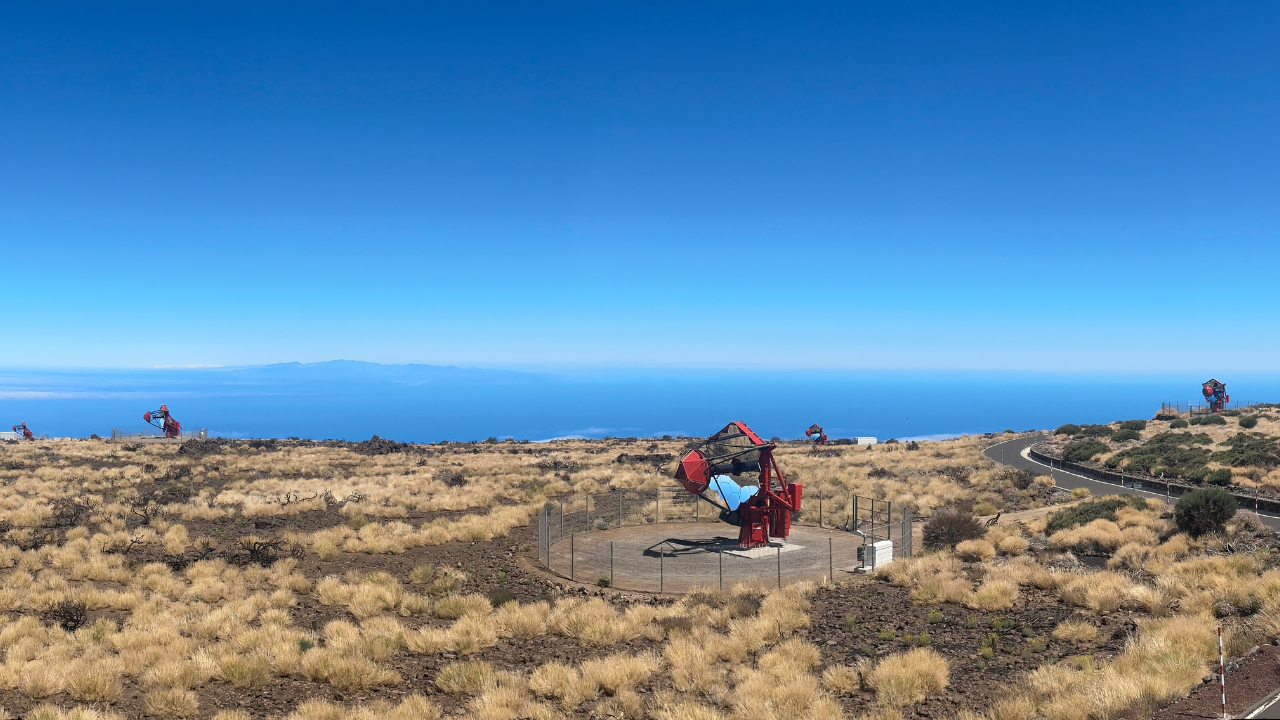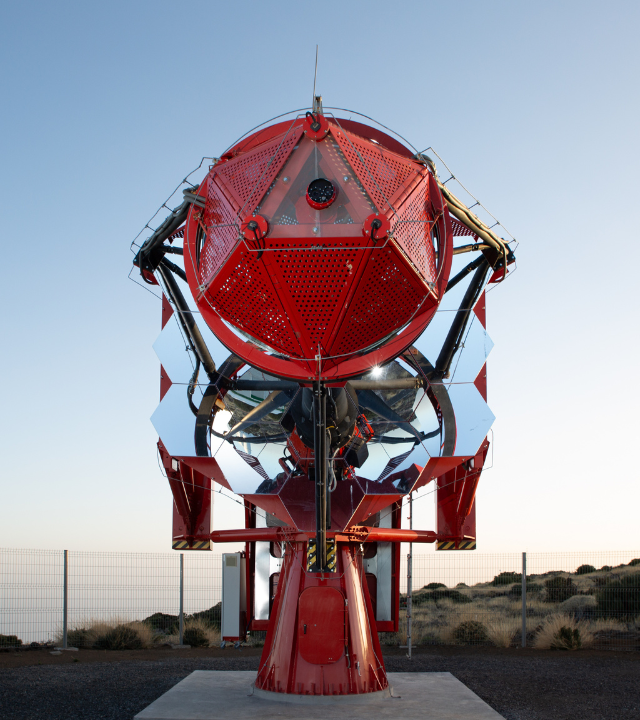ASTRI Mini-Array: 7 telescopes on the Teide plateau
The ASTRI Mini-Array, a scientific project dedicated to the observation of very high-energy gamma rays — from 1 to over 100 TeV — using the atmospheric Cherenkov technique, will consist of a total of 9 telescopes.
The installation of the first telescope, ASTRI-1, began in spring 2022. Since 2024, it has been collecting scientific gamma-ray data from sources both within our Galaxy, such as the Crab Nebula, and from bright extragalactic objects, such as the active lenticular galaxy Markarian 501.
Starting from spring 2025, the project entered a phase of strong acceleration: six additional telescopes were installed on the scenic Teide Plateau in the Canary Islands, bringing the current total to 7 telescopes, as shown in the panoramic image at the bottom of the article, which displays the ASTRI Mini-Array telescopes now located on the Teide site.
As early as August, the focal planes of the new telescopes will begin to be equipped with scientific cameras that will enable spectroscopic observations. The full telescope array is expected to be completed by spring 2026.
These innovative instruments for high-energy astronomy, featuring cutting-edge optical and electronic technologies developed by the Italian National Institute for Astrophysics (INAF), are being added to the approximately 70 telescopes already present at the Teide astronomical site — one of the most important observatories in the world. The site hosts instruments for observations in other spectral bands (visible and microwave), as well as for solar astronomy studies.
The location is particularly favorable for observations because, thanks to the ideal microclimate of the Canary Islands, clouds tend to form at a lower altitude than that of the telescopes, allowing astronomical observations to be carried out throughout the entire year.
Notes
ASTRI Mini-Array is an international project led by INAF and supported by the Italian Ministry of University and Research (MUR), with the involvement of international partners such as the Instituto de Astrofísica de Canarias (Spain), the Fundación Galileo Galilei (Italy/Spain), the Universidade de São Paulo (Brazil), North-West University (South Africa), and the Université de Genèva (Switzerland).
The completion of the ASTRI Mini-Array is made possible thanks to collaboration with a number of engineering firms and industries, including (in alphabetical order):
AC3E (Cile), BCV Progetti, Dal Ben spa, CAEN spa, E4 Computer & Engineering spa, EIE GROUP srl, Empresa de Ingegneria Saavedra (Spagna), Hamamatsu Photonics Italia spa, Media Lario srl, Nuclear Instruments srl, WEEROC (Francia), VVD (Spagna), ZAOT srl
This post is also available in: Italian



